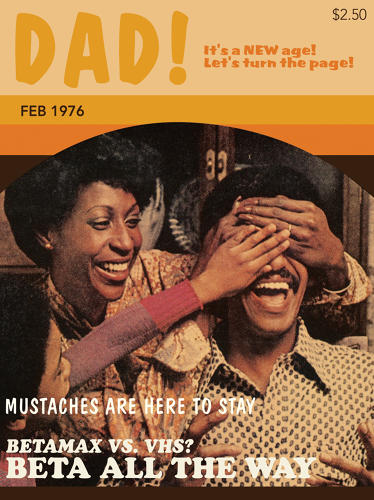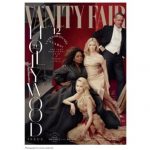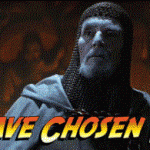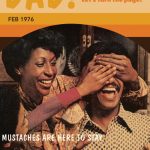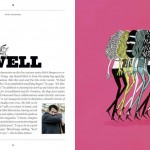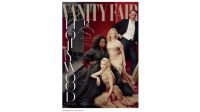Behind The Politely Savage Patriarchal Parody Of “Dad Magazine”
One of the most important distinctions between parents is in their namesake jokes. The quintessential mama joke is one someone else makes about your mom, often that her weight is just grotesquely, dangerously disproportionate to her height. The classic dad joke is one your dad cracks in response to any number of obvious, familiar prompts, often within the confines of a chain restaurant. Mama jokes thrive on the motherly love the teller leverages to make both you and your mom the butt of the joke. The only butt of a dad joke, however, is your dad, who is too oblivious to realize he just played himself (again.)
Dad jokes are just the purest distillation of a dad’s essence, though. Corny, sexless, set in their ways, and randomly opinionated, dads encompass a rich tapestry of traits so reliable you could set your watch by them. (The watch your dad probably gave you as a present, because watches are a total dad-gift.) With the politely savage satirical book, Dad Magazine, a couple of non-dads are putting dads in the crosshairs in a way that makes the target of every crude mama joke seem to have gotten off relatively easy.

As it so happens, the idea for the book originated as a joke. Creators Jaya Saxena and Matt Lubchansky, a writer and cartoonist, respectively, were having lunch with the humorist Mallory Ortberg of the Toast. The three had been talking about dads, for whatever reason, and somehow it turned into an extended riff on headlines for stories that dads would be stoked to read. Ortberg was just launching the Toast at the time, and she suggested Lubchansky and Saxena, who are a married couple, actually Photoshop a fake magazine cover. The resulting post wound up being one of the first items the site ran, and it quickly developed a following. Dad Magazine was an instant Internet hit, putting a distinctly recognizable face on the inherent dorkiness of paternity.
“Historically in movies and shows, there’s always been this archetypal bumbling dad, but his place at the head of the family was always very assured. And people are recognizing that one person can’t be in charge of the whole family,” Lubchansky says. “But there’s something funny about someone who thinks they’re in charge but isn’t. Everyone is actually humoring them. This is something that spouses and children have known for a long time, but it hasn’t always been reflected.”
Dad Magazine: America’s #1 Magazine for “Pop” Culture extends the Toast series far beyond the cover, exploring every single facet of a periodical completely devoted to dad culture. The premise finds the fictional magazine celebrating its centennial with an extra-stuffed issue. Along with the regular features on what’s going on with the neighbor’s yard, which sports have been ruined, and which channels to “catch” Field of Dreams on this month—not to mention the dad-centric ads—there are selected covers from 100 years of past issues. Once the pair started working on the book, however, the lifelong Onion fans had to deal with the reality of converting punchy satirical headlines into complete articles—which is basically like turning a blueprint into a finished and fully decorated house.
“One of the biggest challenges was learning that not every headline would make a funny article,” Saxena says. “Some were just better as headlines, so learning what could really be executed well all the way through was something we were always dealing with.”

Part of putting the book together involved figuring out the format, a process that was similar to laying out an actual general interest periodical. The authors read a lot of magazines, old and new, to get a broad sample of what types of features were really common and how they could filter them through a prism of dad-ness. Along the way they picked up ideas about including an excerpt from the nonexistent novel, The Father of Danger, and refined their version of classic magazine features like the quiz and the horoscope. As they were refining what the overall layout would look like, they were also compiling a list of dad behaviors to include in the book, which required some research.
“Every dad is different, but every dad has a thing. Your dad’s might be cars and mine might be watching NOVA, but dads always seem really enthusiastic about their things,” Saxena says. “We also wanted to include different kinds of dads. In a lot of media, you have this idea of a white, middle-class American dad, and we never get to see the specific weirdness of anyone else. But you talk to anybody, regardless of any other factors, and their dads are like this.”
The pair sought stories from friends about their dads, and they reached out to friends who are dads themselves. They cast a wide net. Even when they weren’t looking for help, though, help found them through the Toast’s robust commenting community. After each new Dad Magazine cover appeared online, fans of the series would email or tweet the authors with stories about their dads. Many of these stories ended up serving as inspiration, seasoning the stew with dad authenticity from every flavor of the fatherhood rainbow.
Obviously, the pair’s own personal dads were not safe from the book’s incisive parody. The authors compared notes on their fathers’ behavior, and even their grandfathers’, routinely mining them for new material to use in the book. The headline of one article—”Come to Think of It, Washington Was a Pretty Lousy General”—is a verbatim quote from Saxena’s stepfather, muttered completely unprompted during a car ride one day. (One can practically hear the happy alarm bells going off in the author’s head upon receiving this unintentional nugget of dad-gold.)
“Our dads are pretty different demographically, but a lot of their mannerisms are very similar, and they get along really well,” Lubchansky says. “It’s not like they have any hobbies or interests in common, but their ineffable dad-ness is there.”
The married couple has collaborated a lot before on smaller pieces, but never on a project this long or involved. The scope of it forced the pair to structure their working dynamic differently than before, writing together at times but also divvying up writing chores when individual items played to one or the other’s strengths. Making the process easier, though, was the team at Headcase Design, who built upon the authors’ notes for a specific aesthetic in the layout and the ads, giving it a professional, realistic sheen.
The only major drawback of making Dad Magazine, however, is that now that it’s finished, the creators are kind of tapped out on dad jokes—partly out of sheer over-usage, but also because there but for the grace of God go they.
“I know plenty of men and women who aren’t dads who get really dad-like at a certain age or about certain things,” Saxena says. “I think a certain dad-enning happens to all of us at some point.”
Have a look at some more images of Dad Magazine, which is in stores now, in the slides above.



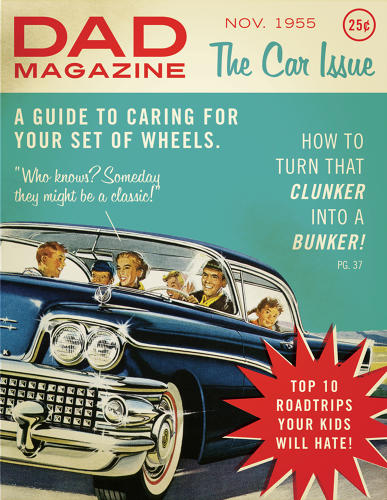
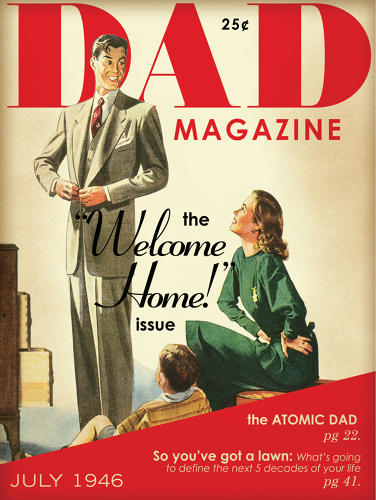
Fast Company , Read Full Story
(46)

